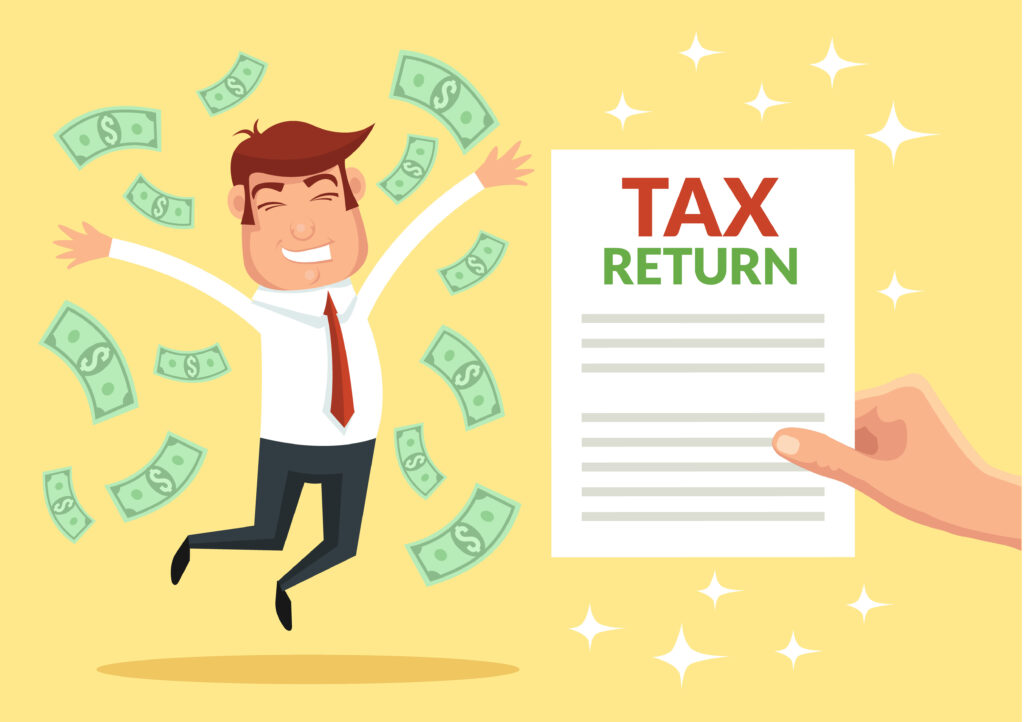Underpayment of Taxes – Personal Returns – How to Avoid Penalties – Dreaded “Spiky Income”

Underpayment of Taxes - Personal Returns - How to Avoid Penalties - Dreaded "Spiky Income"
By Ron Cohen, CPA, MST
Partner
Greenstein, Rogoff, Olsen & Co., LLP
One of the most frustrating issues taxpayers confront as they attempt to deal with their taxes is to determine the required amount and due dates for estimated tax payments during the tax year.
Everyone is aware that any unpaid taxes are due on April 15th of the following year. Any unpaid tax after April 15th of the following year is subject to substantial interest and penalties.
However, a taxpayer must also pay-in taxes during the tax year to avoid “Underpayment Penalties.”
Many taxpayers have all their taxes withheld from their pay at work. Such employees can adjust their withholding tax payments by using Form W-4 and submitting it to their payroll department for processing.
As many know, to determine the correct amount of “Withholding Allowances” on Form W-4 is no small feat. The instructions on Form W-4 often lead the taxpayer to an incorrect answer. But, generally, as time passes, assuming stable income and deductions, people are able to determine what amount of taxes they need to have withheld to avoid problems on the following April 15th.
Other taxpayers are self-employed and/or have large amounts of investment income. With the exception of withholding on certain pension payments, social security, etc., there is no withholding held-back from these payments.
Therefore, the sole responsibility to compute and pay the required amount of tax (both federal and state taxes) rests with the taxpayer. This is also no small or simple responsibility. Please don’t assume it is a simple task.
Self-Employed taxpayers, including owners of a partnership or LLC, may have “self-employment” income (“SE” income). SE income requires SE tax which is how these folks pay their Social Security and Medicare tax. It gets complicated if a taxpayer has both SE income and withholding taxes from a job in the same year.
Withholding, for an employee, of Social Security and Medicare taxes is automatic and these taxes are shared ½ with the employer. Taxpayers with SE income may get the pleasure of paying 100% of the Social Security and Medicare tax themselves. This is an important point, as for many taxpayers, the Social Security and Medicare tax exceeds their regular income tax. Further, the tax increase for the additional ½ of these taxes, previously paid by an employer, for a person that is newly self-employed, is a substantial increase in personal tax cost and often an emotional shock.
For purposes of avoiding underpayment penalties, income tax and self-employment tax are combined into “Total Tax.”
How do we pay in enough to avoid penalties?
In summary, per the IRS website at http://www.irs.gov/taxtopics/tc306.html:
“The United States income tax is a pay-as-you-go tax, which means that tax must be paid as you earn or receive your income during the year. You can either do this through withholding or by making estimated tax payments. If you do not pay enough tax, you may have to pay a penalty for underpayment of estimated tax. Generally, most taxpayers will have paid enough tax to avoid this penalty if they owe less than $1,000 in tax after subtracting their withholdings and credits, or if they paid at least 90% of the tax for the current year, or 100% of the tax shown on the return for the prior year, whichever is smaller. There are special rules for farmers and fishermen. Please refer to Publication 505, Tax Withholding and Estimated Tax, for additional information.”
Estimated Tax Requirement Method (Updated: 5/26/2009)
Many individual small business taxpayers may be able to defer, until the end of the year, paying a larger part of their 2009 tax obligations. For 2009, eligible individuals can make quarterly estimated tax payments equal to 90 percent of their 2009 tax or 90 percent of their 2008 tax, whichever is less. Individuals qualify if they received more than half of their gross income from their small businesses in 2008 and meet other requirements. For details, see Publication 505.
So, not to confuse you, if you're not a small business that qualifies for the rule immediately above, then you are subject to 1. and 2., below.
Sounds pretty easy, but for many, it’s not.
SPIKY INCOME
If you have a job with steady income and your tax deductions are consistent, you most likely have an intuitive sense from year-to-year of whether you are paying in enough taxes. Perhaps, in a prior year, you had to pay a large amount of tax due with your tax return and you try to avoid that, so you’ve learned to set your withholding to avoid a balance due next April. In that case, you are meeting the first test to avoid penalty: Pay in 90% of the current year tax. But, but, how do I know what 90% of the current year tax is during the year and prior to preparing my tax return? You are caught in a time warp, because most people don’t even want to think about their taxes until April of the following year….yet, to avoid penalties, you have to:
Pay in 90% of the current year tax AND pay that in the required amounts by April 15th, June 15th, September 15th of the current year and January 15th for the following year. It get worse: The April 15th payment is for income earned from January through March. The June 15th payment is for income earned in April and May. The September 15th payment is for income earned in June, July and August. The January 15th payment is for income earned in September, October , November and December.
You might ask: “Why aren’t amounts due based on equal 3 month quarters?“ Good question. There is a very technical answer, but it’s best to just say here that we need to cope with it.
For people with smooth trends of income and deductions, this is no problem. For people with “SPIKY INCOME” or spiky deductions (where the amounts spike up or down during the year or between years), the 90% amount is hard to know. For example, a realtor may earn $100,000 of commissions between January and March and earn nothing the rest of the year.
So the taxpayer is required to project into the future what 90% of the tax will be and get the tax paid-in ¼ of the full year amount each quarter. As you can imagine, a tax projection is based on a number of assumptions and can become very complex.
Therefore, thankfully, there is a second rule:
Pay in 100% of your prior year Total Tax. The percentage is increased to 110% if your Adjusted Gross Income exceeds $150,000 in the prior year.
The “prior” year Total Tax can be found on the tax return just finished and filed for the immediately preceding year. If you filed an extension for that tax return, you have to use a good estimate of what the Total Tax is likely to be when the prior year return is ultimately filed. So, to avoid penalties for this year, you have to rely on a tax return for last year that, legally, is not even required to be filed yet….time warp time again…that’s where CPA’s can help sort all this out.
WHAT DOES THAT MEAN, you say?
This means you can ignore trying to figure out 90% of the current year tax IF you determine what is 100% (or 110%) of your TOTAL TAX on, say, your 2008 Form 1040, and pay-in that amount (through withholding or Estimated Tax Payments) evenly throughout the year 2009 (1/4th by April 15th, 1/4th by June 15th, 1/4th by September 15th and 1/4th by January 15th.)
For example: If your Total Tax for 2008 was $20,000 and you pay the I.R.S. $5,000 per quarter, no underpayment penalty will apply regardless of how much tax is due on April 15th 2010 for the 2009 tax year. Let me say that differently.
Let’s say your 2008 Total Tax was $10,000. You do well, and in 2009, your total tax will be $100,000. If you pay-in $2,500 per quarter during 2009 (1/4th of $10,000), NO penalty will apply and all the remaining tax ($90,000 equal to $100,000 - $10,000 paid) will be due on April 15th of 2010. In this case, you really didn’t need to know that your 2009 tax will be $100,000 and do all that computational work. You just needed to know that your 2009 income spiked up over 2008, and that 100% of the prior year tax will keep you safe from penalties. You get to hold on to all the incremental tax money until it comes due on April 15th of the following year.
Don’t confuse your “Tax Due” with your “Total Tax.” Your Total Tax is before all withholding and estimated tax payments. It is not the amount you might owe after those amount on April 15th for the prior year.
The I.R.S. computer does all these calculations each time you file a tax return. You only become aware of it if: 1) you get an I.R.S. Notice asking you to pay a penalty, and/or, 2) Your tax software or tax preparer gives you a warning that a penalty will apply.
A taxpayer can’t use #2 if the prior year was not a 12-month tax year. (For example, a new U.S. tax resident who entered the country on July of the prior year…unless they made a special election to have a 12 month year – taxes are fun stuff, aye!).
Also, clearly, if your income decreases (Spikes Down!) and you expect the 2009 Total Tax to be $5,000. then, of course, you won’t pay-in $2,500 per quarter for a total of $10,000 of tax because you have no expectation of incurring that much tax when your tax return is prepared next April. In a bad year, you revert back to the 90% of the current year tax rule and pay that in ($5,000 of current year tax paid as $1,250 per quarter), since the 100%(110%) of the prior year tax rule results in an unnecessary overpayment of your taxes… Unfortunately, people often confuse these rules and massively over-pay their taxes in a year their income spikes down, which is very financially stressful to them.
An additional piece of advice is that we never target your tax payments by using 90% of the current year tax. We round it up to 100% of the current year tax because doing a tax projection is tricky business and based on weak assumptions. Therefore, we always leave the 10% safety zone to cover any errors in assumptions.
Pay in installments on a current basis under an annualized income installment method. Basically, this requires the taxpayer to figure out their income for each quarter and pay in an amount of tax by the quarterly due date to cover it. This method makes sense for, for example, a realtor who has commissions that spike up and down in large amounts during the year. Rather than focus on 90% of the full year tax, they cover the amount of annualized tax. See http://www.irs.gov/publications/p505/ch02.html#en_US_publink10007401. You’ll need help using this method. Most people use #1 or #2, above.
There are rules that spread any withholding tax paid during the year as if it was paid evenly throughout the year….even if it was all paid in December. Many people use this rule to “back-end” withholding tax payments. Be very careful in using this rule to avoid penalties. The I.R.S. has been trying to get it revoked for years. Even if this rule can be used to avoid Underpayment Penalties on the individual, using it incorrectly can result in Payroll Tax Penalties on the employer. So be careful.
Easy, right? Nope. We spend a significant amount of time on these issue for our high-income clients as many have very spiky income.
California
Oh, But There’s More!!
The above rules are generally the same for the Franchise Tax Board regarding California Income Taxes.
Now that you suffered through the above rules, you thought you had fulfilled your duty to the State of California by paying in the amount due evenly throughout the year (which has been the rule for over 50 years), assuming you are paying 100% (110%) of the prior year Total Tax in four quarterly installments. Shame on you! How presumptuous! No. They passed a new rule to accelerate the amounts due in the first and second quarter to accelerate cash-flow to the state. Well, that’s the law, so here it is:
http://www.ftb.ca.gov/forms/2009/09_540esins.pdf
“Installment Payments – Installments due for each taxable year shall be 30% percent of the required annual payment for the 1st and 2nd required installments and 0% percent of the required annual payment for the 3rd and 40% in the 4th quarter.”
It still equals 100% in total, so it’s just a numbers game to “front-end” the payments… just because you didn’t have enough on your mind to think about.
Update: For Tax Year 2009, new law change:
California taxpayers who have or are projected to have adjusted gross income of $1 million or more (or $500K for married filing separately) cannot use the 110% safe harbor for prior years. Therefore, these taxpayers must use the 90% of current year tax.
California Budget- Accelerated Estimated Tax Payments
For as long as I can remember, taxpayers making estimated tax payments paid in their taxes evenly over 4 quarters on 4/15, 6/15, 9/15, and 1/15 of the following year, at the rate of 25% for each payment of the required “safe” full-year estimated tax amount. There are exceptions, but the vast majority of people follow this rule.
Now, it will be 30% 1st quarter, 30% 2nd quarter, 0% 3rd quarter, 40% 4th quarter = 100%
Comments:
If you earn your income evenly throughout the year, I’m flabbergasted how it is legal to require the accelerated payment of tax prior to when a taxpayer has earned the income! At least they made the 3rd payment in September = to zero as some form of “rough justice” to even it out. Note, this rule impacts many small businesses and the self-employed as well as investors with large interest and dividend income.
More complexity and confusion in the tax law. The I.R.S. federal law did not adopt this (thanks for small favors!), so this is more I.R.S/California Franchise Tax Board NON-conformity to worry about.
No surprise, this law change is called an “accounting gimmick” by the press to balance the budget from the accelerated cash flow.
AB17, Sec. 19025 for the actual bill. http://www.leginfo.ca.gov/pub/09-10/bill/asm/ab_0001-0050/abx4_17_bill_20090723_amended_sen_v98.pdf
So, those are the rules. There are a few exceptions in special cases. Please consult a tax advisor if you need assistance.
I can always be reached for questions or comments at (510) 797-8661 x237.
We hope you found this article about “Underpayment of Taxes - Personal Returns - How to Avoid Penalties - Dreaded "Spiky Income"” helpful. If you have questions or need expert tax or family office advice that’s refreshingly objective (we never sell investments), please contact us or visit our Family office page or our website at www.GROCO.com. Unfortunately, we no longer give advice to other tax professionals gratis.
To receive our free newsletter, contact us here.
Subscribe our YouTube Channel for more updates.

Alan Olsen, is the Host of the American Dreams Show and the Managing Partner of GROCO.com. GROCO is a premier family office and tax advisory firm located in the San Francisco Bay area serving clients all over the world.
Alan L. Olsen, CPA, Wikipedia Bio

GROCO.com is a proud sponsor of The American Dreams Show.

The American Dreams show was the brainchild of Alan Olsen, CPA, MBA. It was originally created to fill a specific need; often inexperienced entrepreneurs lacked basic information about raising capital and how to successfully start a business.
Alan sincerely wanted to respond to the many requests from aspiring entrepreneurs asking for the information and introductions they needed. But he had to find a way to help in which his venture capital clients and friends would not mind.
The American Dreams show became the solution, first as a radio show and now with YouTube videos as well. Always respectful of interview guest’s time, he’s able to give access to individuals information and inspiration previously inaccessible to the first-time entrepreneurs who need it most.
They can listen to venture capitalists and successful business people explain first-hand, how they got to where they are, how to start a company, how to overcome challenges, how they see the future evolving, opportunities, work-life balance and so much more..
American Dreams discusses many topics from some of the world’s most successful individuals about their secrets to life’s success. Topics from guest have included:
Creating purpose in life / Building a foundation for their life / Solving problems / Finding fulfillment through philanthropy and service / Becoming self-reliant / Enhancing effective leadership / Balancing family and work…

MyPaths.com (Also sponsored by GROCO) provides free access to content and world-class entrepreneurs, influencers and thought leaders’ personal success stories. To help you find your path in life to true, sustainable success & happiness. It’s mission statement:
In an increasingly complex and difficult world, we hope to help you find your personal path in life and build a strong foundation by learning how others found success and happiness. True and sustainable success and happiness are different for each one of us but possible, often despite significant challenges.
Our mission at MyPaths.com is to provide resources and firsthand accounts of how others found their paths in life, so you can do the same.
Roy Moëd on Turning Memories Into Masterpieces
“There are two dates: you’re born and you die — but it’s the dash in between that tells your story.”– Roy Moëd In an age of scrolling feeds and vanishing digital memories, Roy Moëd is championing something different — something timeless. Through his company LifeBook Memoirs, he’s helping individuals turn their life stories into beautifully…
Mark Lutz: A Lifelong Mission to End Extreme Poverty
When Mark Lutz speaks about eradicating extreme poverty, his passion emanates from a lifetime of service and firsthand experiences around the world. Lutz, Senior Vice President of Global Philanthropy at Opportunity International, has spent more than four decades raising funds for missions and microfinance—transforming countless lives in the process. A Childhood Shaped by Apartheid Born…
Aaron Manoucheri: Building a Multi Generation Legacy in Real Estate
Aaron Manoucheri, a third-generation real estate investor and partner at Manoucheri Brothers LLC, understands the delicate balance between tradition and innovation in the family business. In a recent interview on American Dreams, he shared his journey, philosophy, and insights on navigating the ever-changing real estate landscape while maintaining a deep connection to his roots. A Legacy…
Combining Profits with Purpose: A New Era of Impact Investing
A Panel Discussion with Peter Borish, Linda Horner & Dr. Kal Mentak In an era where traditional philanthropy and capitalism often seem at odds, a new wave of thinking is reshaping the landscape—one that integrates financial success with meaningful social impact. This was the central theme of a compelling panel discussion featuring Peter Borish, Linda…



